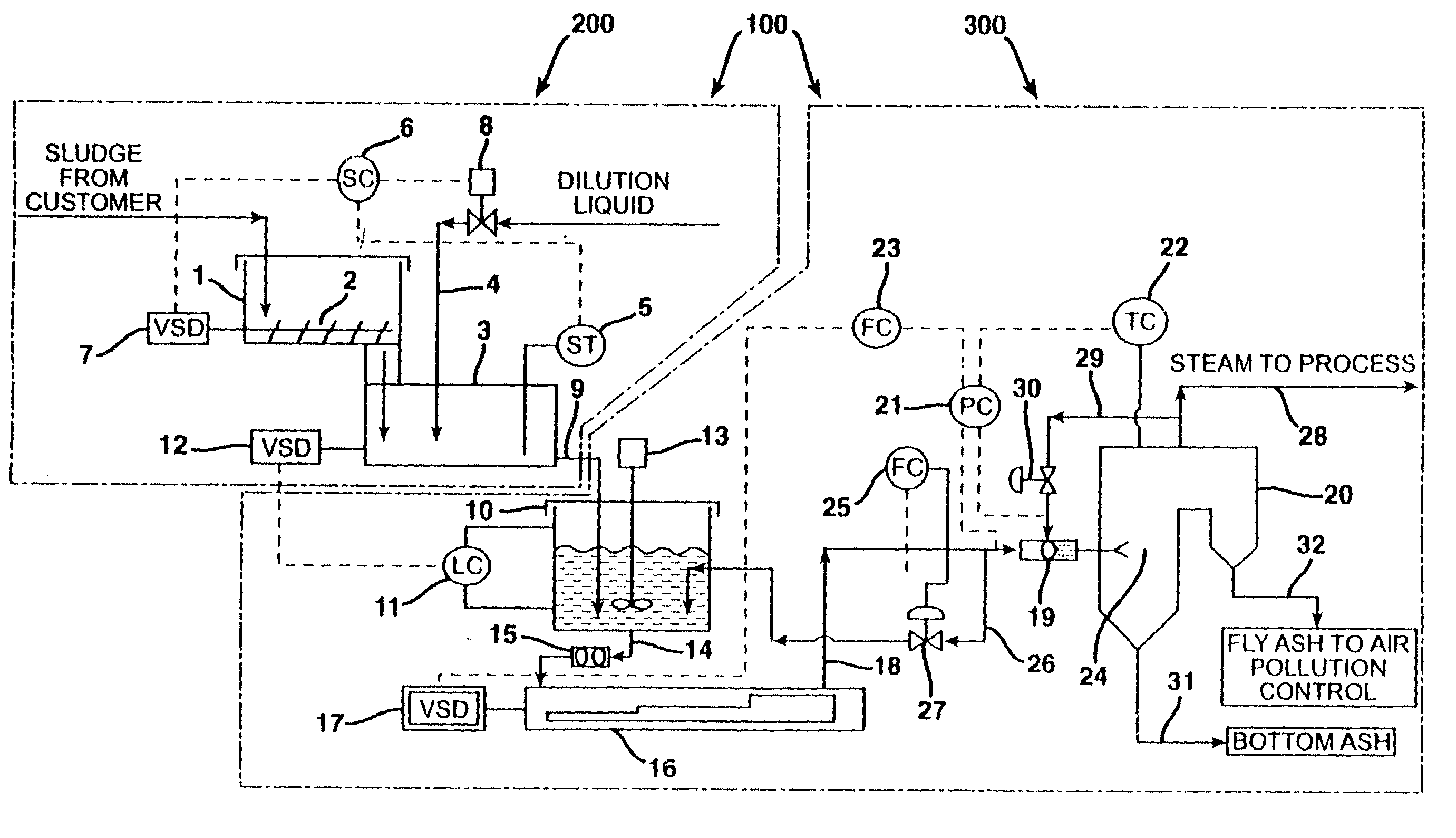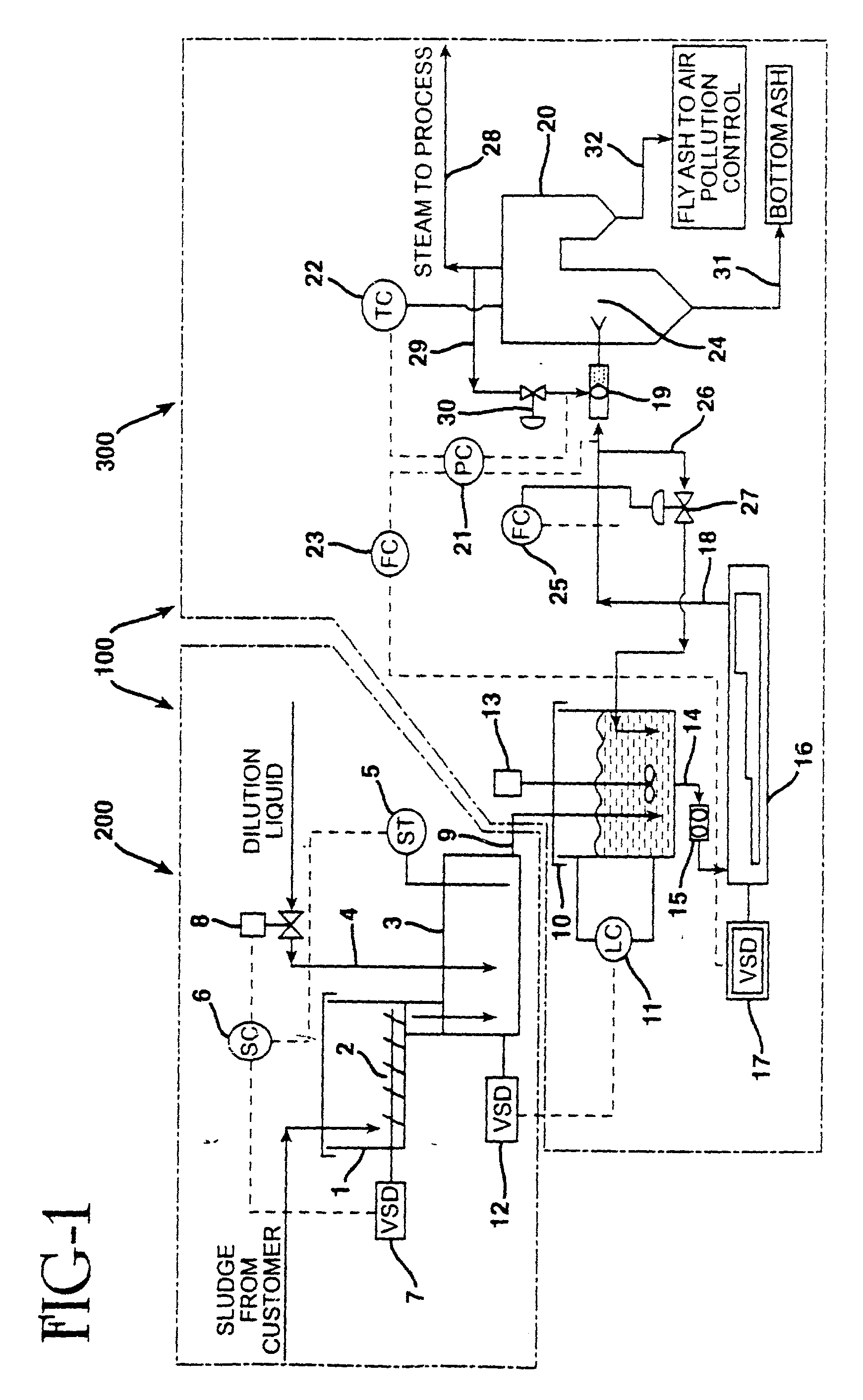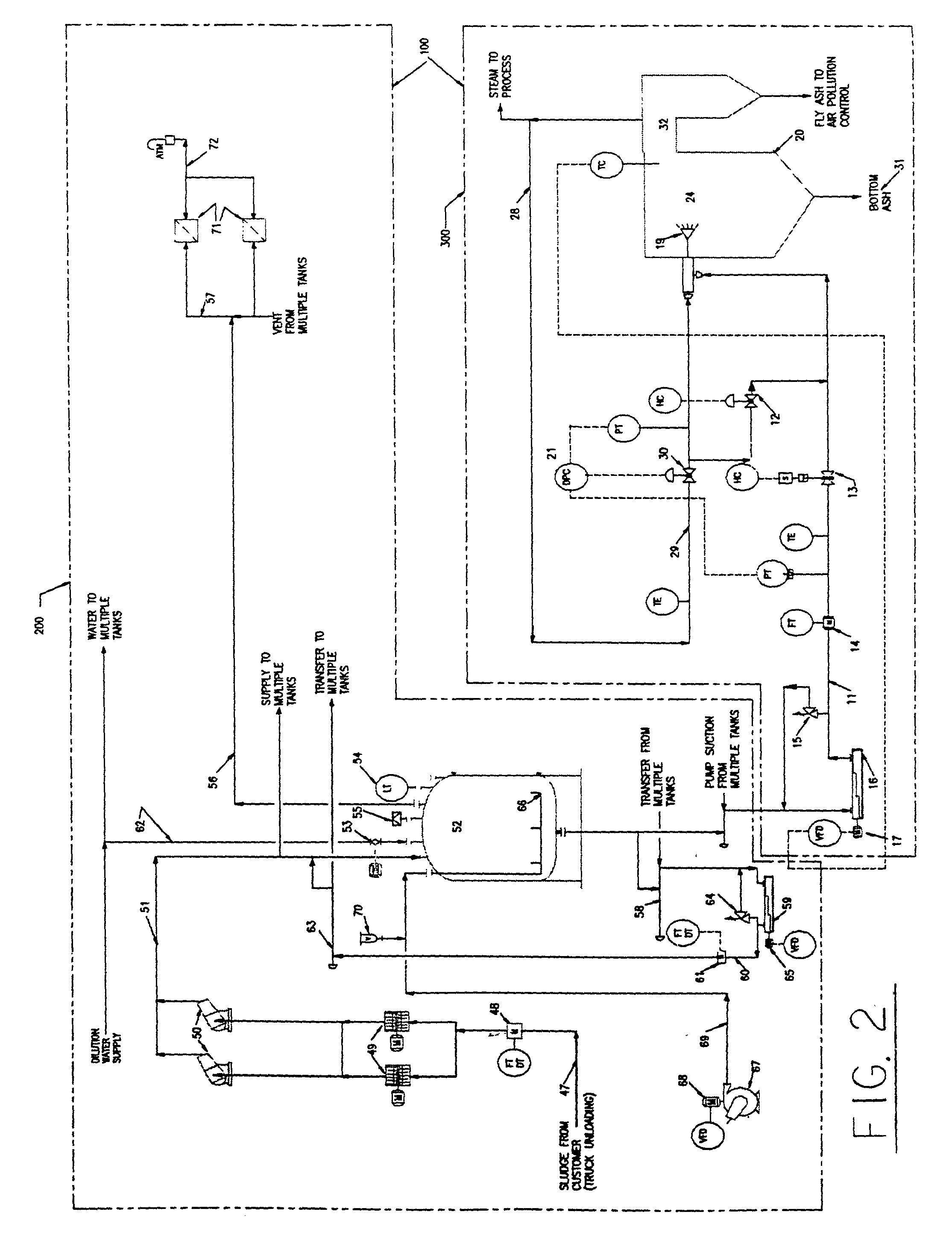Co-combustion of waste sludge in municipal waste combustors and other furnaces
a technology of municipal waste and combustion furnace, which is applied in the direction of solid fuel combustion, combustion types, lighting and heating apparatus, etc., can solve the problems of poor combustion, extremely adverse air emissions, and high cost and even dangerous technology
- Summary
- Abstract
- Description
- Claims
- Application Information
AI Technical Summary
Benefits of technology
Problems solved by technology
Method used
Image
Examples
Embodiment Construction
[0060] A system according to the present invention was tested in which diluted paper and sewage sludge were injected into an operating conventional municipal waste combustor.
[0061] The combustor facility selected for testing has three mass burn refractory MWC's, each rated at 120 tons per day. Normal operation is with two combustors operating and one on stand-by. The combustors are tied to two waste heat boilers and associated air pollution control trains. Each air pollution control train consists of an electrostatic precipitator and spray absorber. The selected facility is permitted to burn up to 240 tons per day of municipal solid waste (MSW) and generates for sale up to 60,000 pounds per hour of super-heated steam at 230 psig and 500.degree. F.
[0062] Minor modifications were made to the existing combustor facility to allow for receiving, diluting, mixing, storage and pumping of sludge. A plastic mixing tank having a capacity of 1800 gallons was installed at the facility and a Nem...
PUM
 Login to View More
Login to View More Abstract
Description
Claims
Application Information
 Login to View More
Login to View More - R&D
- Intellectual Property
- Life Sciences
- Materials
- Tech Scout
- Unparalleled Data Quality
- Higher Quality Content
- 60% Fewer Hallucinations
Browse by: Latest US Patents, China's latest patents, Technical Efficacy Thesaurus, Application Domain, Technology Topic, Popular Technical Reports.
© 2025 PatSnap. All rights reserved.Legal|Privacy policy|Modern Slavery Act Transparency Statement|Sitemap|About US| Contact US: help@patsnap.com



